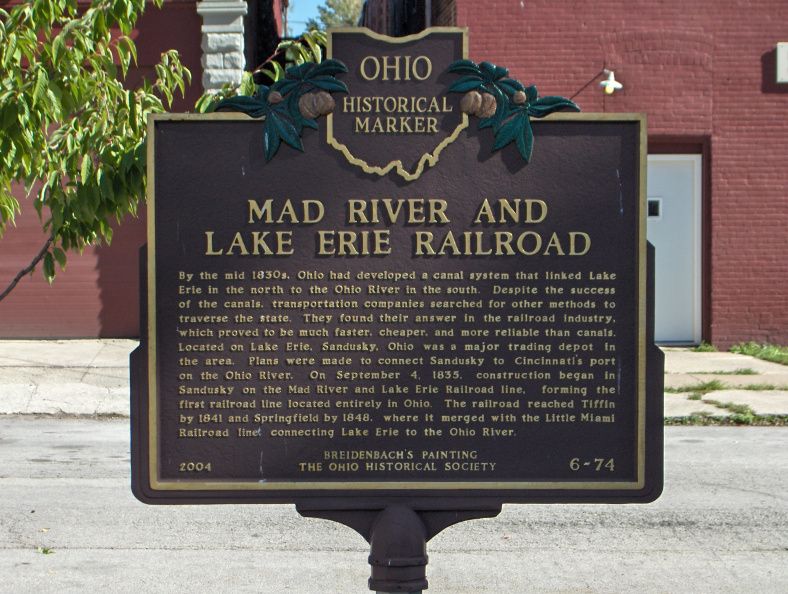Ohio Historical Marker: Mad River and Lake Erie Railroad

By the mid 1830s, Ohio had developed a canal system that linked Lake Erie in the north to the Ohio River in the south. Despite the success of the canals, transportation companies searched for other methods to traverse the state. They found their answer in the railroad industry, which proved to be much faster, cheaper, and more reliable than canals. Located on Lake Erie, Sandusky, Ohio was a major trading depot in the area. Plans were made to connect Sandusky to Cincinnati’s port on the Ohio River. On September 4, 1835, construction began in Sandusky on the Mad River and Lake Erie Railroad line, forming the first railroad line located entirely in Ohio. The railroad reached Tiffin by 1841 and Springfield by 1848, where it merged with the Little Miami Railroad line, connecting Lake Erie to the Ohio River.
In 1858, the Sandusky Dayton Cincinnati Railroad Company took control of Mad River and Lake Erie Railroad line and built the Tiffin passenger depot in 1862, which served as one of six railroad depots in the Tiffin area. As a result of the rail lines, Seneca County experienced a real estate boom. Over the next several decades, the Mad River and Lake Erie Railroad changed ownership at least four times. In 1892, the Tiffin depot came under the control of the Big Four Railroad (Cleveland, Cincinnati, Chicago, and St. Louis), until services ended between Berwick and Sandusky, including Tiffin, on July 1, 1938, when the railroad failed to make a profit. The depot is part of the Fort Ball-Railroad Area Historic District that is listed on the National Register of Historic Places.